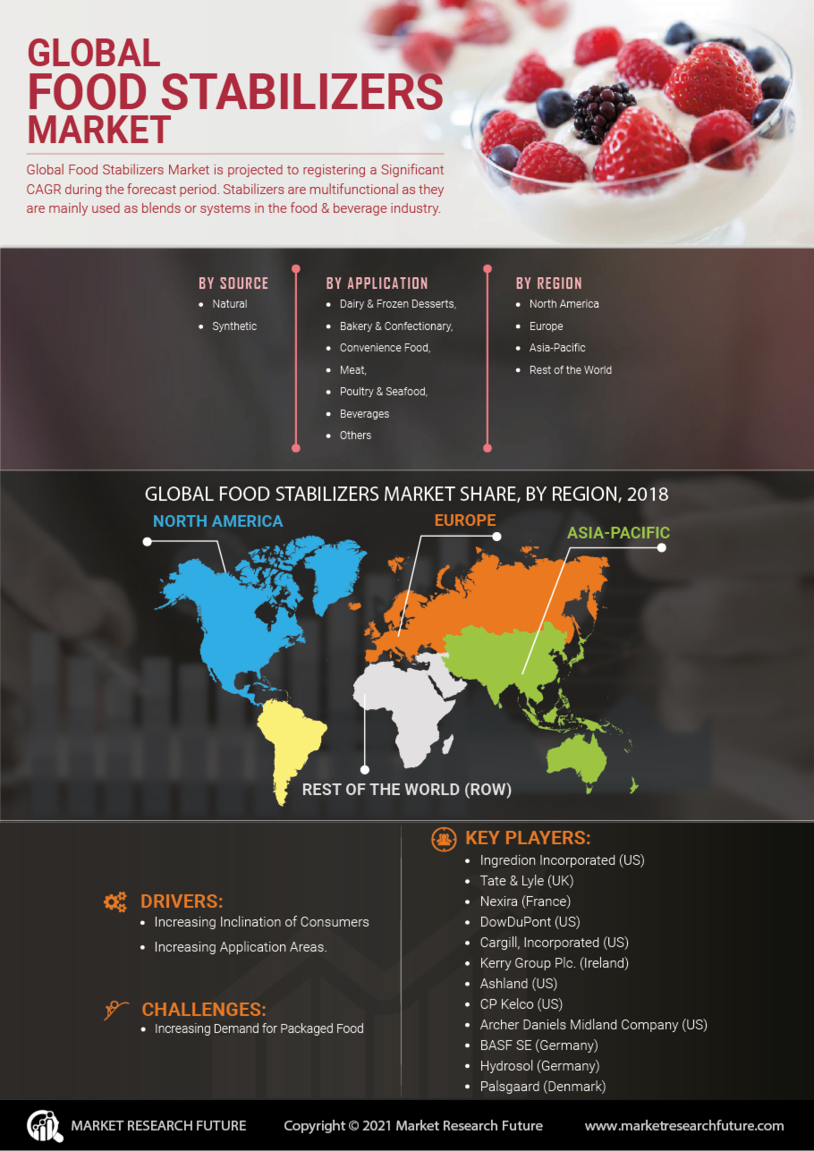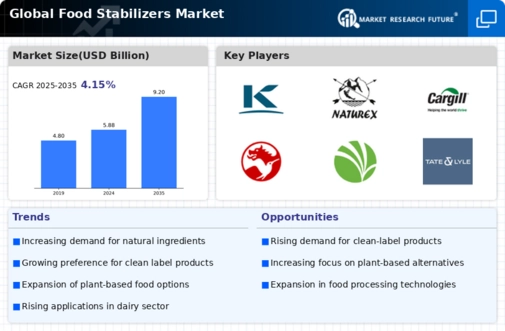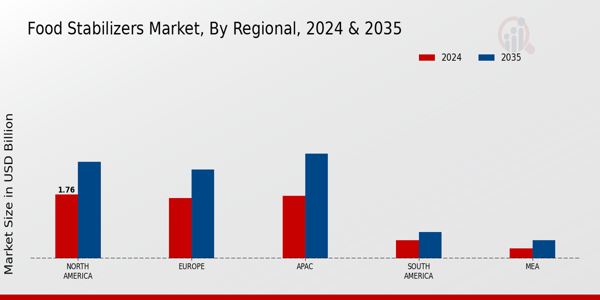Market Growth Projections
The Global Food Stabilizers Market Industry is poised for substantial growth, with projections indicating a market value of 5.88 USD Billion in 2024 and an anticipated increase to 9.2 USD Billion by 2035. This growth trajectory suggests a compound annual growth rate of 4.15% from 2025 to 2035, reflecting the industry's resilience and adaptability to changing consumer demands. The increasing incorporation of stabilizers in various food applications, coupled with the rising demand for processed and convenience foods, underscores the market's potential for expansion in the coming years.
Health and Wellness Trends
The Global Food Stabilizers Market Industry is influenced by the growing health and wellness trends among consumers. There is an increasing preference for clean-label products that contain natural ingredients, which has prompted manufacturers to explore alternative stabilizers derived from natural sources. This shift aligns with the broader movement towards healthier eating habits, as consumers become more conscious of the ingredients in their food. As a result, the market is expected to expand, with projections indicating a value of 9.2 USD Billion by 2035. This growth suggests that the demand for natural stabilizers will likely continue to rise, reflecting the industry's adaptation to consumer preferences.
Rising Demand for Processed Foods
The Global Food Stabilizers Market Industry experiences a notable surge in demand for processed foods, driven by changing consumer lifestyles and preferences. As urbanization continues to rise, consumers increasingly seek convenient food options that require minimal preparation. This trend is reflected in the market's projected value of 5.88 USD Billion in 2024, indicating a robust growth trajectory. Stabilizers play a crucial role in enhancing the texture, shelf life, and overall quality of these products, making them indispensable in the food manufacturing process. Consequently, manufacturers are likely to invest in innovative stabilizer solutions to meet the evolving demands of consumers.
Emerging Markets and Globalization
The Global Food Stabilizers Market Industry is witnessing growth in emerging markets, fueled by globalization and increasing disposable incomes. As economies develop, consumers in these regions are gaining access to a wider variety of food products, leading to a higher demand for stabilizers that ensure product quality and consistency. This trend is particularly evident in Asia-Pacific, where rapid urbanization and changing dietary habits are driving market expansion. The increasing availability of processed foods in these markets suggests a promising outlook for stabilizers, as manufacturers seek to cater to the evolving tastes and preferences of consumers.
Regulatory Support for Food Safety
Regulatory frameworks promoting food safety and quality standards play a pivotal role in shaping the Global Food Stabilizers Market Industry. Governments worldwide are implementing stringent regulations to ensure that food products meet safety standards, which in turn drives the demand for stabilizers that enhance product stability and safety. Compliance with these regulations necessitates the use of effective stabilizers, thereby bolstering market growth. As the industry adapts to these regulatory changes, manufacturers are likely to invest in research and development to create stabilizers that not only meet safety standards but also align with consumer preferences for healthier options.
Technological Advancements in Food Processing
Technological advancements in food processing significantly impact the Global Food Stabilizers Market Industry. Innovations in processing techniques, such as high-pressure processing and advanced emulsification methods, enhance the efficacy of stabilizers in food applications. These advancements not only improve product quality but also extend shelf life, catering to the increasing demand for convenience foods. As the industry evolves, manufacturers are likely to adopt these technologies to optimize their production processes. This trend may contribute to a compound annual growth rate of 4.15% from 2025 to 2035, indicating a sustained growth trajectory for the market as it embraces new technological solutions.






















Leave a Comment